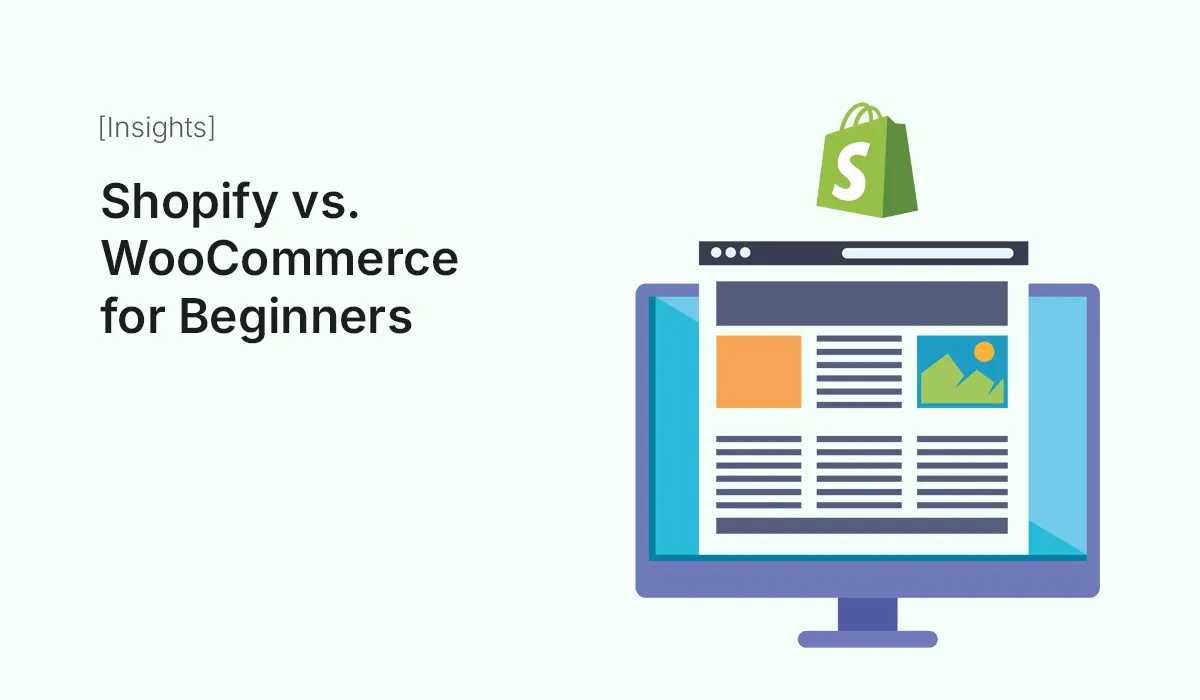Introduction
If you’re just starting your journey into the world of online selling, two platforms are bound to come up in your research: Shopify and WooCommerce. Both are popular, beginner-friendly, and powerful in their own ways. But if you’re new to eCommerce, it can be confusing to figure out which one is best for your business.
In this beginner-friendly guide, we’ll compare Shopify vs. WooCommerce in detail. We’ll explore their differences, strengths, and limitations so you can make the right choice for your first online store.
Overview of Shopify and WooCommerce
What is Shopify?
- Shopify is an all-in-one eCommerce platform.
- It provides hosting, security, payment integrations, themes, and apps all in one place.
- You pay a monthly subscription, and Shopify takes care of the technical side.
- Great for beginners who want simplicity.
What is WooCommerce?
- WooCommerce is a WordPress plugin that turns a WordPress site into an online store.
- You need your own hosting and domain to get started.
- It’s free to use but requires setup and some technical understanding.
- Great for those who want flexibility and control.
Shopify vs. WooCommerce: A Beginner’s Comparison
Ease of Use
- Shopify: Extremely beginner-friendly. No coding skills needed. Everything from hosting to security is managed for you.
- WooCommerce: Has a learning curve since you’ll manage hosting, setup, and WordPress. More steps for beginners.
Winner: Shopify (best for absolute beginners).
Cost
- Shopify: Starts at $29/month (Basic Plan). Additional costs for premium themes and apps.
- WooCommerce: Free plugin, but you’ll pay for hosting ($5–$25/month), domain, themes, and extensions.
Winner: WooCommerce (cheaper if you’re tech-savvy, but costs can add up).
Design & Themes
- Shopify: 100+ themes (10+ free, rest paid $180–$350). Polished, responsive, and easy to customize.
- WooCommerce: Thousands of free and premium WordPress themes. Unlimited design flexibility with page builders like Elementor.
Winner: WooCommerce (more variety and flexibility).
Payment Options
- Shopify: Supports 100+ payment gateways, including Shopify Payments, PayPal, and Stripe. Charges transaction fees unless you use Shopify Payments.
- WooCommerce: Supports PayPal, Stripe, Square, and more. No extra transaction fees (except from payment providers).
Winner: WooCommerce (more control, no extra Shopify fee).
Features & Apps
- Shopify: Built-in features like abandoned cart recovery, multi-channel selling (Facebook, Instagram, Amazon), and app integrations.
- WooCommerce: Unlimited plugins (WordPress ecosystem). However, some features require additional setup.
Winner: Tie (Shopify = ease, WooCommerce = flexibility).
Customization
- Shopify: Limited compared to WooCommerce. You can adjust settings but advanced changes require Liquid coding.
- WooCommerce: 100% customizable with plugins, themes, and code.
Winner: WooCommerce (better for advanced users).
SEO (Search Engine Optimization)
- Shopify: Built-in SEO features like customizable titles, descriptions, and mobile optimization.
- WooCommerce: More powerful SEO options with plugins like Yoast SEO and Rank Math.
Winner: WooCommerce (more advanced SEO control).
Security
- Shopify: Security handled for you (SSL, PCI compliance, updates).
- WooCommerce: Security depends on your hosting and plugins. You’ll need to handle updates and backups yourself.
Winner: Shopify (less hassle for beginners).
Scalability
- Shopify: Scales easily with higher plans. Great for growing businesses.
- WooCommerce: Scales too but requires advanced hosting and technical setup.
Winner: Shopify (easier scaling).
Support
- Shopify: 24/7 customer support via chat, email, and phone.
- WooCommerce: Community forums, documentation, and hosting provider support. No central support team.
Winner: Shopify (better beginner support).
Shopify vs. WooCommerce: Pros & Cons
Shopify Pros
- Beginner-friendly setup.
- Hosting and security included.
- 24/7 customer support.
- Professional themes.
- Scalable for growing businesses.
Shopify Cons
- Monthly subscription fees.
- Transaction fees unless you use Shopify Payments.
- Limited customization flexibility.
WooCommerce Pros
- Free to start (plugin only).
- Full customization freedom.
- No transaction fees from the platform.
- Thousands of plugins and themes.
- Great for SEO control.
WooCommerce Cons
- Requires hosting setup and maintenance.
- Learning curve for beginners.
- No dedicated customer support.
- Can become expensive with premium plugins.
Which One Should Beginners Choose?
- Choose Shopify if…
- You want simplicity and don’t want to deal with hosting or coding.
- You need quick setup and professional support.
- Budget isn’t your top concern.
- Choose WooCommerce if…
- You’re already comfortable with WordPress.
- You want more control over design and features.
- You’re budget-conscious but willing to handle technical setup.
Real-Life Examples
- Small Boutique Store: Shopify works great for beginners with small catalogs and no technical background.
- Blog + Store Combo: WooCommerce is perfect if you’re already running a WordPress blog and want to add products.
- Growing Brand with Marketing Needs: Shopify offers more seamless scalability.
- Niche Business with Special Features: WooCommerce allows custom plugins to meet unique needs.
Conclusion
Both Shopify and WooCommerce are excellent platforms, but the right choice depends on your skills, budget, and business goals.
- Beginners who want simplicity, security, and support should go with Shopify.
- Beginners who want flexibility, customization, and cost control should try WooCommerce.
Ultimately, there’s no wrong choice — both platforms can help you build a successful online store.
Still deciding on Shopify vs WooCommerce for beginners? Choose the platform that best fits your business goals and start building your online store today!






